#iamayoungdancer

Inspired by our campaign, #iamayoungdancer that we began in 2019, we, at Apsaras Arts, have been keen to listen to the voices of young dancers from across the globe. In an attempt to allow them an opportunity to share their challenges and aspirations, and do that with a peer, our section #iamayoungdancer, that unfolds as a video conversation, will articulate some of the concerns and desires of young dancers from around the world. We kickstart this edition with a conversation between Singapore-based Periyachi Roshini and Australia-based Rukshikaa Elankumaran.
Periyachi Roshini Arangetram Review

Periyachi Roshini enthralled the audience with her infectious energy and soulful abhinaya, writes Swarnavarsha Gurumoorthy The Mahatma Gandhi Memorial Hall, Singapore, recently hosted its first-ever performance – Bharatanatyam Arangetram of Periyachi Roshini, student of Singapore Indian Fine Arts Society (SIFAS) under the tutelage of Geethanadhan PK. Saraswathi Sthuthi in ragam Saraswathi set to Rupaka Talam ,composed by the legendary GN Balasubramaniam was an energetic start for the recital which had some innovative adavu patterns in the swarams. This kriti glorifying Goddess Saraswati was set to dance by Geethanadhan who gave the nattuvangam support for the evening. In the Varnam, Adi Sivane in ragam Thodi set to Adi Talam, a composition of the maestro KN Dandayudapani Pillai, Roshini effortlessly played a nayika (heroine) who yearns for the formless Adi Sivan dancing in Chidambaram. The sancharis in the first half were aptly chosen though there could have been a longer teermanam on the mridangam before the start of the second half of the Varnam. The jathi compositions by Kiran R Pai coupled with intricate cross patterns might have been a bit challenging for Geethanadhan on the nattuvangam, but the Varnam was testimony to his confidence and imagination as choreographer. Chinnanchiru Kiliye played by the instrumentalists kept the audience engaged until she Roshini got back on stage with the Padam – Varugalaamo Ayya in ragam Manji set to Misrachapu, a composition of Gopalakrishna Bharati. Narrating the story of Nandanar, an outcast who was denied entry into the Chidambaram temple, Roshini immersed herself in this abhinaya piece choreographed by Neewin Hershall under whom she trained previously. This soulful piece clearly showed her mastery over facial expressions and also created a personal connection with the audience. The fast-paced Keerthanam, Gaana Mazhai in ragamalika set to Rupaka Talamby Ambujam Krishna described the music emanating from Krishna’s flute and the magic it creates. This rare, novel Keerthanam, musically delightful, was choreographed with alternating vivacious movements and a few hurried abhinaya sequences that in hindsight, could have been slower. Roshini’s crowning glory though was the confidence with which she handled this Keerthanam. The dancer then went on to portray a nayika who questions her beloved Lord Krishna who seems a bit indifferent to her in the famous Javali, Parulanna Maata in ragam Kapi set to Adi Talam, a composition by Dharmapuri Subbaraya Iyer. As she performed this choreography of Bragha Bessel, the spontaneous switching between the characters was distinct and flawless. Her attention to detail to effectively depict the characters is highly commendable. Concluding with a Thillana by Patnam Subramanya Iyer in ragam Khamas set to Adi Talam in a the energy with which the piece was choreographed by Geethanadhan showed her command over nritta with neat adavus, controlled leaps and clear finishes. Well balanced stamina, engaging, intriguing adavu patterns and the ease with which Roshini presented her Arangetram, is reflective of her rigorous training along these years under many teachers. The lighting for the evening was well-managed. This being the first performance in the venue, there were sound balancing issues. The impressive orchestra team included T Ramanan on the mridangam who was an asset, accompanied by TP Nishanth (vocal) Niranjan Pandian(flute) and Ganesh Kumar NNR (violin).
#iamayoungdancer
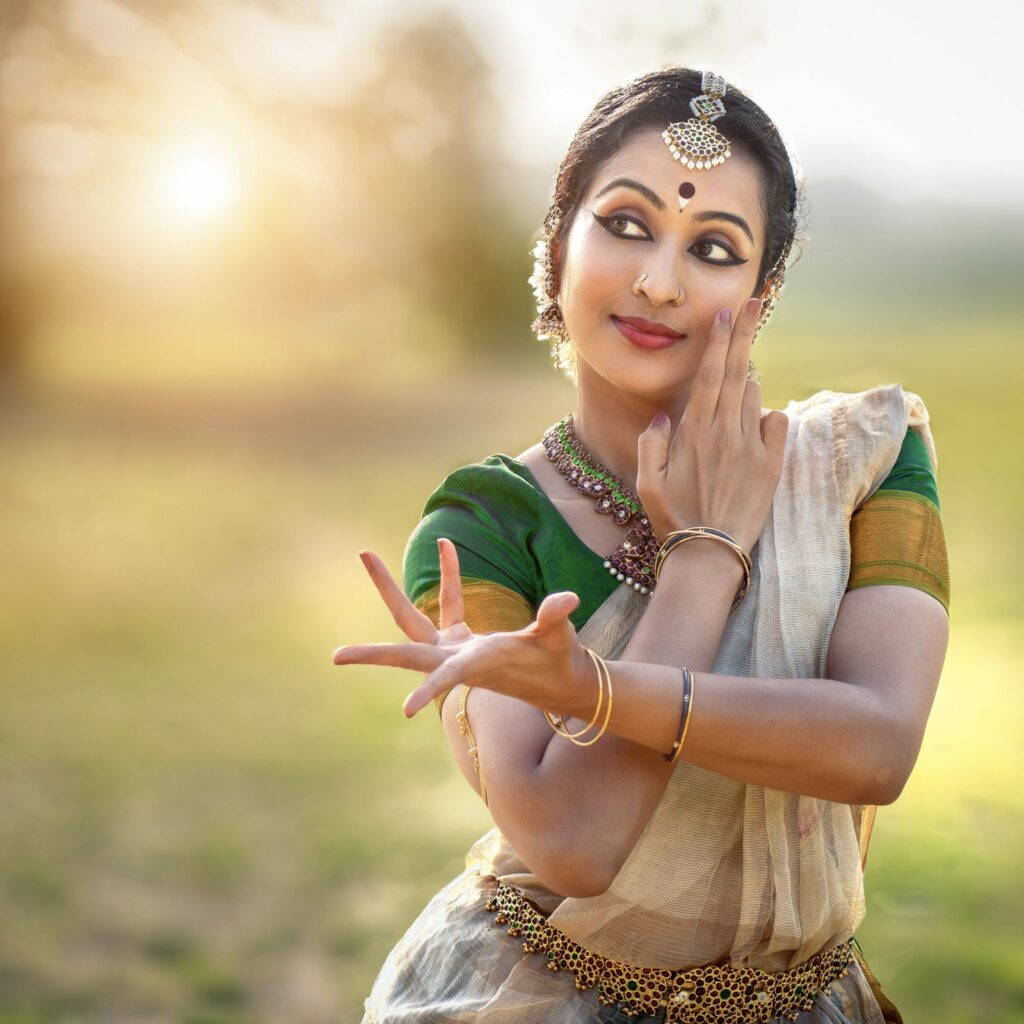
A conversation between Coimbatore-based Bharatanatyam dancer-choreographer, Divya Nayar and Singapore-based Bharatanatyam dancer-choreographer, Madhuri Suresh . Sometimes, the best conversation starters are those that investigate the very premise of the conversation itself. This conversation did precisely that! The two dancers began with sharing their perspectives on the idea of a young dancer. Thereon, they moved to focus on the dynamics between a teacher and a student, and to individual approaches to teaching methods, then and now. While a few years ago, there was an unsaid rule, to blindly follow what was taught, kids of this generation, the two dancers acknowledged, are very bold and do not shy away from asking questions or reasoning out a few things. It becomes challenging therefore for the teacher to find new ways to engage with a student. The conversation also touched upon the importance of empathy and that of constructive criticism, and the importance of peers and colleagues to share and exchange notes on each other’s dance. We are certain that Divya and Madhuri have made a new connection and will continue to stay in touch!
#iamayoungdancer
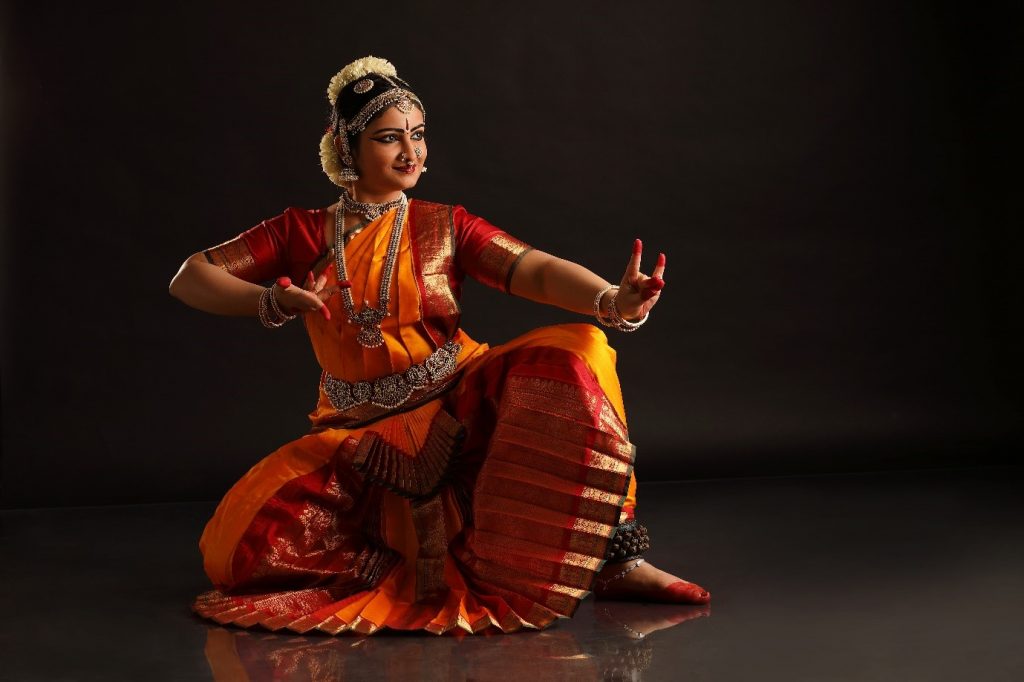
Two dancers, from Singapore and Chennai, exchange notes on all things that matter to the world of young dancers A conversation between Singapore-based dancer Janani Arunkumar and Chennai-based dancer Kavya Ganesh, began with the two dancers exploring the notion of the term #iamayoungdancer. While Kavya expressed that it is an interesting space to be in as a young dancer, where one gets to define one’s own art, she felt it could be considered “a phase in one’s life”. Janani added that for her, being a young dancer meant “a phase in your dancing career where you figure out what to present, choreograph and the time to integrate learning into performing and choreographing”. Speaking of the pandemic and its aftermath, the dancers agreed that there was an urgent need during the pandemic to “create one’s own pieces which, in turn, also created a culture of young dancers creating their own work”. The conversation then shifted to the subject of grants and commissions; how they are available but don’t provide enough financial backing and the struggles of each artiste in this sphere. In Singapore, Janani shared information about the NAC (National Arts Council) which supports organizations and individual dancers as well but often there is a question on the audience’s mind about whether they need to pay to watch the work of a young dancer. Both dancers had their own points of view on this matter. Kavya felt that as dancers, one has to create demand not at the cost of commercializing or diluting the art form. “This means,” she said, “the viewership needs to be increased by making the form accessible to a really large group of people. Classical dance has that power to connect even with a layman and its potential really needs to be harnessed. The minute the viewership increases, it translates to ticket sales and that attracts financial funding.” Janani felt that as dancers, if one has the freedom and power to integrate what is learnt and presented, the audience will naturally enjoy and relate to it. “As young dancers, this is something one must strive to do,” she said, “The important thing to note here is that entertaining doesn’t mean that the classical form needs to be compromised. The misconception that the classical form can’t reach people needs to be dispensed with.” The responsibility of a young dancer, both the dancers believed, is “to connect with the next generation. With awareness and time and more sustained campaigns (like Pay for the Arts), this is bound to happen. This will also help in making the profession in itself more sustainable thereby reducing the need for dancers to overwork and compensate their finances with multiple jobs.” Speaking of the dance community in Singapore, Janani noted that the support within the community of dancers in Singapore is “very good, as they collaborate, work with each other and involve students from different schools to participate in a production”. The duo also discussed the positives and negatives of social media. While the world of the internet and its many possibilities have helped to connect dancers from across the world with each other, especially during the lockdown, the perils of social media can just not be ignored. “One needs to remember the platform also projects people in a different light and one can’t take everything very seriously on this platform,” Kavya added. Amen to that!
#iamayoungdancer
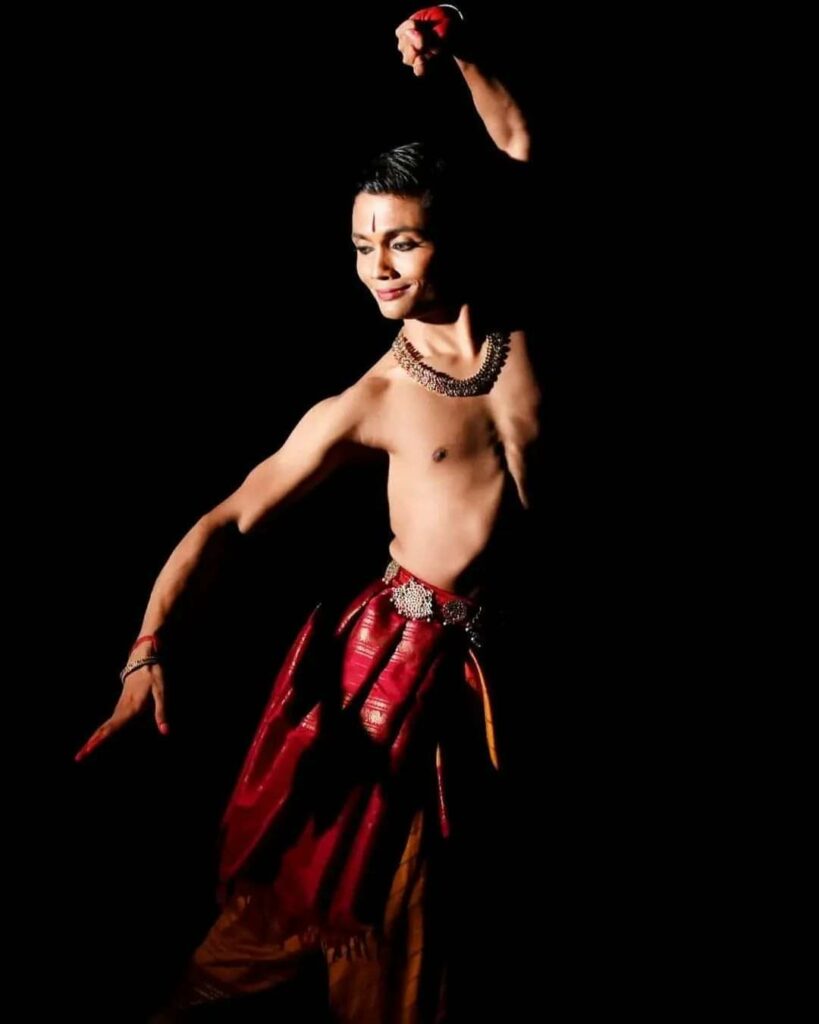
Singapore-based Kshirja Govind and Delhi-based Pritam Das exchange notes on dance and the many beautiful things that are a part of its world. From her home in Singapore and taking time off from a workshop in Bhilwara, Rajasthan as part of SPIC MACAY in West Bengal, Kshirja Govind and Pritam Das, respectively logged onto Zoom to share their stories as young dancers. The conversation began with the dancers discussing the need to be aware of the body as an instrument, the care needed to keep it injury-free and the imperativeness to create awareness on the same. Kshirja noted that the awareness with regard to training and nutrition on social media helped her work on her body in terms of its alignment, posture, etc.https://player.vimeo.com/video/744580964?h=74016726ed Naturally, the topic of conversation segued into social media. Both the dancers admitted that the internet had indeed made the world flat and helped in networking amongst the community and and has undeniably brought dancers together, especially during the pandemic. They discussed the possibilities for dance in the current context and Pritam pointed out that youngsters today are indeed getting a lot of opportunities, thanks to social media and the exposure it has provided. Speaking of the scenario in Singapore and the future of dance there, Kshirja acknopwledged the role of the government and how it not only provides aid in terms of funding, but also arranges many programs and encourages dancers. “There are also programs where children in schools (in Singapore) are exposed to varied cultures and dance forms,” she added. Needless to say, with great power and opportunities comes great responsibility. The two dancers discussed the need for young dancers to have a moral responsibility to try and bring in more viewership to this art form. “One of the main objectives of dancers,” Pritam said, “should be to give back to society in every way possible.” Currently on a tour across rural schools in India under the umbrella of SPIC MACAY, Pritam said this movement aims to take arts to every child of this country. “Meeting these kids, and interacting with them is making them aware of our art forms and seeing the joy it brings to them, is all a very humbling experience.” While the need to perform in traditional performing spaces is crucial, Pritam reflected that experiences like these, to perform in unconventional spaces is also equally rewarding. Unconventional spaces also create more opportunities in the form of workshops, lec-dems, seminars which helps to spread awareness among the people and also helps the dancers to grow with their work. Talking of growth, the two dancers discussed the idea of feedback and criticism. Kshirja agreed on receiving criticism both positive and negative, as few things on dance are subjective while some are purely objective. “I believe that different people’s perspectives are needed to improve one’s own dance,” she said. Pritam insisted on getting feedback from the audience apart from gurus and teachers, as this widens one’s horizons. He also mentioned instances where people have walked up and given him feedback, genuinely like parents do. “I also believe that peers and colleagues can also help each other in one’s growth,” he added. Another interesting discussion was on the topic of collaboration in practicing spaces like Adavu jamming. Both dancers were clearly excited about the idea. Initiatives like these help each other and open up one’s perspectives. Kshirja talked about her collaborative work in performing spaces, but said she had not participated in sessions like these and would love to. One thing is clear; both Kshirja and Pritam are looking forward to opportunities to connect with fellow dancers, in understanding each other’s views, perspectives, sharing their passion, energy and learnings from dance with each other. The conversation finally ended with both the young dancers wondering how this art form would be in a few decades from now! In a good, safe space, hopefully! Kshirja Govind is a Singapore-based dancer and has been learning Bharatanatyam in the Kalakshetra style for over 12 years now. She is learning under Guru P. N. Vikas at Singapore Indian Fine Arts Society (SIFAS). She was awarded the Best Student and ‘Natyavisharad” on completion of her Dance Diploma at SIFAS in 2018. She is also learning at the Upadhye School of Dance and is a company dancer with Apsaras Arts. A regular performer in Singapore for various productions, Kala Vaibhavam, SIFAS festivals, temples, etc, Kshirja also extensively performs abroad in India (Mumbai, Chennai, Bangalore) and around Asia. Her recent performances include solo Bharatanatyam performances at Sri Krishna Gana Sabha for this year’s Ilamayil Thirumai Series and at RK Swami Auditorium as part of Sri Parthasarathy Swami Sabha’s Margazhi Season. She has received many accolades including the Best Performer at Sri Parthasarathy Swami Sabha (119th Year-Dance Festival) in Feb 2019, Prize Winner at the Pravasi Bharatiya Divas 2018, Singapore and the Future Face title at the India International Dance Festival in Bhubaneswar, 2017. Through her collaboration with the Singapore Symphony Orchestra, she has become the first Indian Classical Dancer to receive the honour of working with the SSO. She has been a part of a collaborative performance of Bharatanatyam and Chinese Hokkien Opera at the Chulalongkorn Asian Heritage Forum, Thailand. Pritam Das defines passion for dance through his immense dedication and effortless grace as a Bharatanatyam dancer. Having undergone his initial training under Smt. Jayita Ghosh and Sri Samrat Dutta, he is now under the advanced tutelage of Sangeet Natak Akademi awardee Smt. Rama Vaidyanathan. Pritam has performed both solo and group works as part of his teacher’s ensemble in several prestigious festivals including Spirit of Youth and HCL Concert Series by Music Academy, Uday Shankar Dance Festival, NCPA Mumbai’s Mudra Festival, Dhauli Kalinga Festival, Gudi Sambaraluu, Ustad Alauddin Khan Samaroh, Shivaargya Dance Festival and many more. He is an ‘A’ grade artist of the Doordarshan, an empanelled artist in Spic Macay, and was also awarded the National Scholarship from the Ministry of Culture, Govt. of India for the field of Bharatanatyam
#iamayoungdancer

Social Media, Success, Insecurities and Inspiration Two young dancers, Nitya Sriram from Singapore and Nivedha Harish from Chennai, participated in the #iamayoungdancer series this month. Read on to get a sense of what all they talked about… The two dancers – Nitya Sriram and Nivedha Harish kicked off the conversation with the idea of competition that prevails in the world of dance right now. Nivedha, a young Bharatanatyam dancer, musician and a Harikatha practitioner and performer felt that, although there might be healthy competition amongst dancers, there is a constant sense of insecurity, angst, every now and then for dancers paving their way into the world of dance. “I’d say,” Nivedha said, “the only way to get around this is to be confident about oneself and trust your guru and the art form, at large.” Along the same lines, Nitya moved on to discuss the notion of what constitutes as success for young dancers. “With so much content floating around freely on social media and with a steep number of dancers in the playing field and with programs and avenues, aplenty, how does one even attempt to find an answer to this question,” she wondered. “I suppose the only way forward is to be aware of this and negotiate it to lessen one’s own sense of insecurity.” There’s also a positive side to this notion of competition, the duo agreed. “The good thing about it,” Nivedha said, “is that it allows dancers from different backgrounds, banis and parts of the world come together to create work.” Incidentally, the two dancers have also recently bagged the opportunity to work on ARISI: Rice, a production by Apsaras Arts. Speaking of social media, both dancers agreed that that social media in itself has reached a point of saturation on so many levels. “I do think that young minds are being carried away easily with this kind of content,” Nivedha said, “And often this can lead to a sense of dilution and reduction in the attention span amongst the audience, especially with the young audience.” This apart as Nitya added, garnering an audience for in-person performances has become very hard. “Audiences seem to prefer to watch a performance from the comfort of their homes. This can never be like watching a performance live.”https://player.vimeo.com/video/766767643?h=348aa7bf51&badge=0&autopause=0&player_id=0&app_id=58479 The dancers also went on to discuss the onset of dance on film and spoke of how dance can be captured on camera and how this trend has caught on with many artistes. “A whole host of dancers have played around with this idea, thanks to the lockdown and the privilege of time.” They discussed Yavanika, a dance on film by Priyadarsini Govind and seemed in awe of how Priyadarsini had managed to pour so much thought and imagination into the making of the film. Yet another interesting topic of conversation was about the body (of dancers) and the insecurities that often surround that subject. While Nivedha said she often finds a solution to this problem by believing in hard work and her own efforts, Nitya suggested that the fact of the matter is that dance is a very visual medium. She said that as young dancers, one could bring about a change by being more welcoming and less judgmental and accepting all body types. The dancers also discussed injuries for dancers and agreed that yoga certainly helps with overall well-being for dancers, The duo also agreed that it is imperative to focus and take care of one’s mental health in addition to physical well-being. The discussion ended with the dancers stressing the importance of holistic development for a young dancer, which involves watching performances and reflecting on them, reading, and learning from different gurus. Amen to that!
#iamayoungdancer
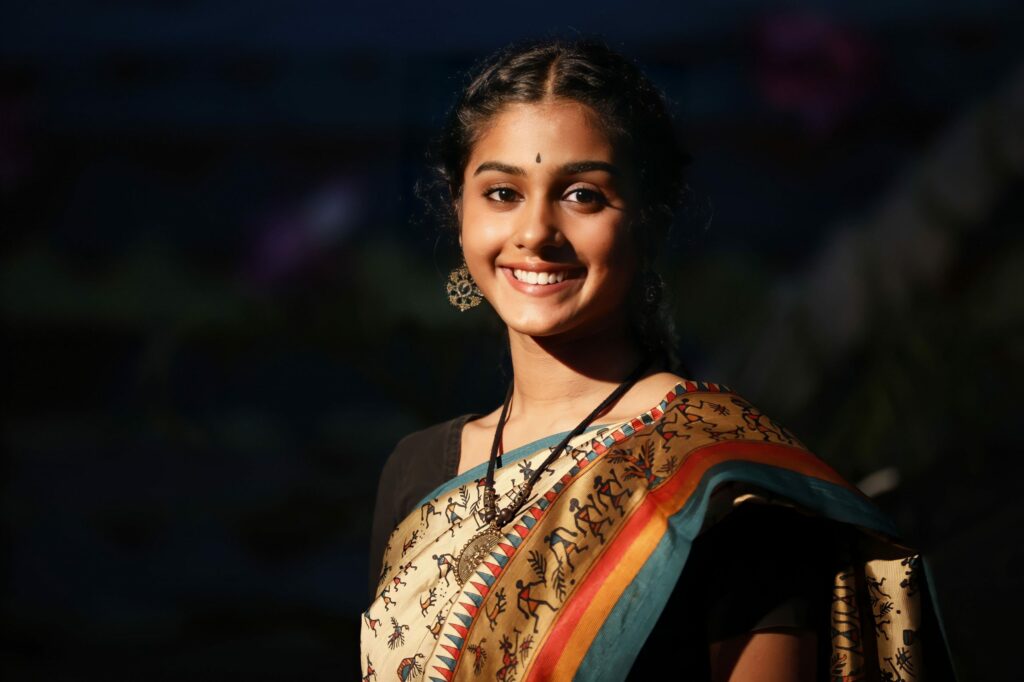
Vaishnavi Srinivasan and Shreya Murthy, get together to discuss their current state-of-mind and concerns that pertain to the world of dance and dancers In this edition of Aavartana, we decided to connect Vaishnavi Srinivasan (from Chennai) with Shreya Murthy (from Singapore) with each other, and let them have a candid conversation. Vaishnavi is a disciple of Roja Kannan and Shreya, who had her initial training at The Singapore Fine Arts Society, currently trains under Priyadarshini Govind in Chennai. When they met online – at the time we had this conversation, Shreya happened to be in Singapore – the two young dancers launched into a conversation, instantly, catching up with where they are in the now, segueing seamlessly to discuss concerns, and challenges that they contend with in the context of the world of dance. The dancers shared their experiences on how they juggled their time and energy between academics and learning dance and also discussed the possibility of taking a break from books and work to pursue dance full-time. Clearly, the duo seems like they are in a happy place, with dance occupying a significant chunk in their lives, than before. Shreya acknowledged the fact that moving base to Chennai has opened up her perspectives and possibilities in terms of dance. “Being constantly in an environment that gives you opportunities to watch performances, every other day, and to be able to think about dance constantly and almost be wrapped in that feeling is a new experience and one that’s truly enriching,” she said. Vaishnavi agreed with Shreya and together, the dancers discussed the possibility of continuing to dance, full-time or go back to academics. It’s obvious both of them are passionate about academics but nothing at the cost of dance. Amen to that! Next up, the dancers talked about how dance is evolving with the younger, more modern generation. They felt encouraged to see a variety of new ideas and subjects being presented in performances alongside neo mudras that are emerging to show modern technology. While love and pining are represented with scenarios from the modern world, they acknowledged that it would take a while for it all to gain acceptance in the dance world. They finally came to the conclusion that everything is possible if one is conscious of their tradition but tweaking it just a little to make it relevant to the world that we live in. The dancers then moved on to one of the eternal favorite topic of dancers – online vs offline classes and mediums of learning. Shreya talked about the potential of the online medium and how it has given an opportunity to dancers all around the globe to participate in workshops, view conferences and performances happening in Chennai. Vaishnavi said, “Online classes are great, when we have no choice.” She conceded that she learnt many new pieces and performed them too and was glued to her Zoom screen, every day during the years of the lockdown, but honestly, her memory of the items learnt online, she said was hazy and required constant revision, in comparison to the pieces she learnt, in person in a class environment. The dancers finally concluded with the discussion of their favorite performance in the recently concluded December Music and Dance season. Curious to know what they said? Watch this video!
#iamayoungdancer
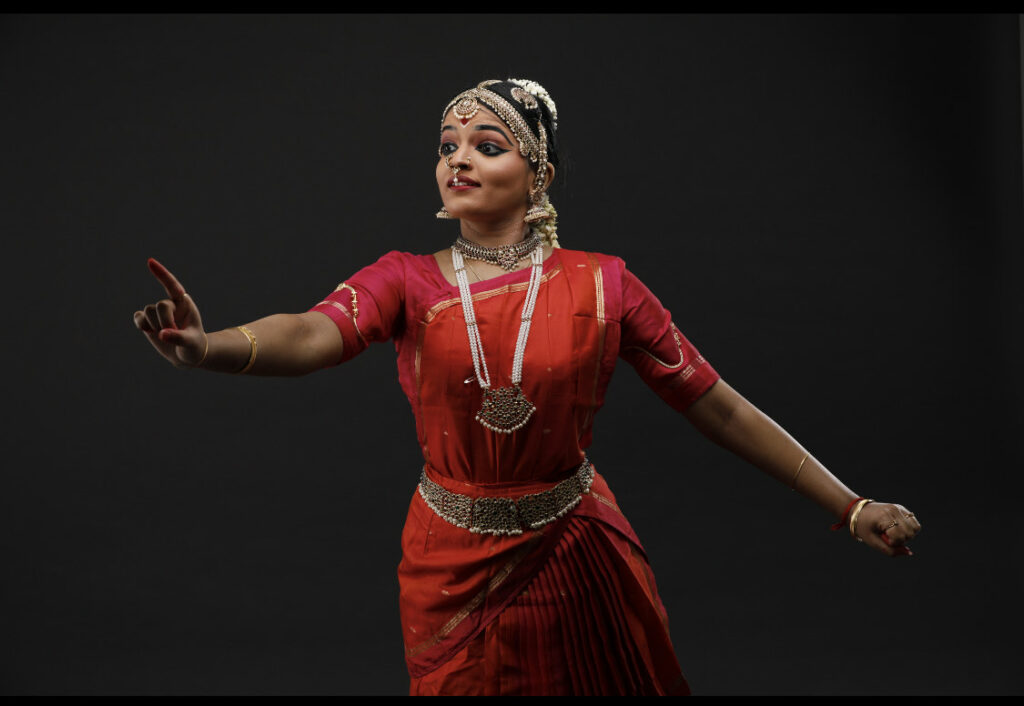
Sharing Notes from a Production Dancers Nagalakshmi from Singapore and Apeksha Kamath from Bangalore share common dance experiences and memories. Nagalakshmi and Apeksha had the privilege of sharing energies recently for Apsaras Arts’ production Arisi: Rice, which premiered in Singapore at the Esplanade- Theatres on the Bay in November 2022. That, needless to say, became the starting point of their conversation. They began their talk reminiscing their experiences on working for this magnum opus of a production. Apeksha travelled from India to Singapore to work in this production and she acknowledged that this overseas experience, working and dancing with dancers from across cultures was a once-in-a- lifetime kind of experience. She also praised Apsaras Arts’ company organisers and the dance team for taking care of her needs and she didn’t have to worry about anything; her sole purpose was to dance, which she enjoyed a lot. When asked about her experiences of working with other dancers from India, Nagalaskhmi said that this was one of the biggest groups that she has worked with and she felt very comfortable right from day one. They hit it off together from the start. Nagalakshmi acknowledged that the company dancers learnt a lot from the dancers from India and also the Balinese dancers too. This led to the two discussing the similarities of Bharatanatyam and Kechak dances. Nagalashmi then posed an interesting question to Apeksha about the cultural differences in India and Singapore. Apeksha said that she didn’t find much difference based on the time spent with dancers in Singapore and those in India, as they were all fully engaged and discussing dance, full time. “I was very much at home,” said Apeksha, “Although I haven’t stayed long enough to be able to comment on cultural differences.” Apeksha also mentioned she is a fan of SIngapore as they (four dancers from India) loved the city. She was in awe of how safe the city is, even at 11:30pm and how they could all venture out carefree.When Nagalaskshmi asked Apeksha about the most challenging part of working for Arisi, Apeksha conceded that surprisingly it was not the dancing part but about figuring out seven hours of sleep, not because they didn’t have the time but because of the adrenaline rush and the late night coffee and conversations that kept them awake and invigorated. “I’d say they have been some of the most enjoyable days of my life,” Apeksha said. Apeksha asked Nagalakshmi about how different it was for her working on Arisi compared to other productions of Apsaras Arts. Nagalakshmi replied that her first work with Apsaras Arts was Amara, which was a digital recording. Then came Nirmanika where she worked with dancers from Singapore. “Arisi was a huge production with dancers from India and Bali,” said Nagalakshmi, “And I learnt so much about Balinese dance, how similar it is to Bharatanatyam and their dances in Arisi were mesmerizing, packed with energy.” This led Nagalakshmi to her next question for Apeksha about how she learnt the entire dance in such a short span of time. The Singapore dancers had learnt it earlier but the Indian dancers had to catch up pretty quickly. “I was initially not sure of which style to follow,” Apeksha said, “As there were four dancers from India, and all four have different gurus and the style of dancing of the Singapore dancers was also quite different. It was a little hard and we didn’t yet have a clear picture of the whole production.So we initially learnt only our specific sections and we knew that once we’d reach Singapore, everything would fall in place.” And it did! All’s well that ends well!
#iamayoungdancer
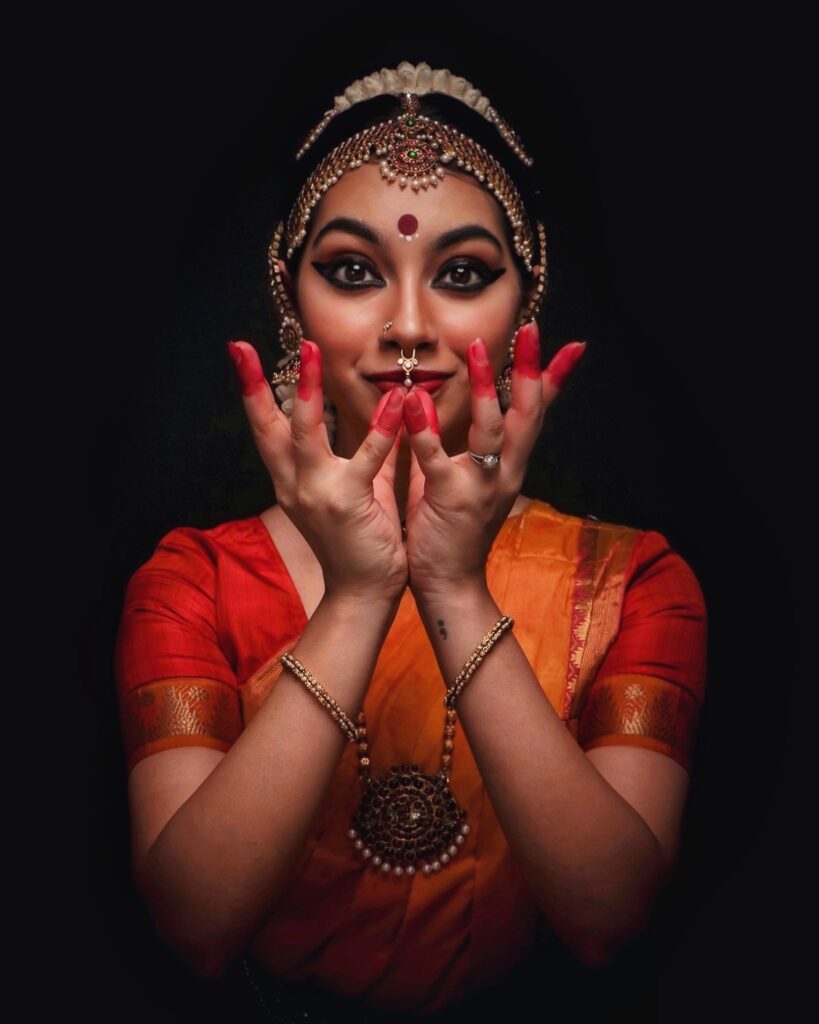
Singapore-based dancer, Periyachi Roshini asks Bengaluru-based dancer, Shreema Upadhyaya, a few pertinent questions that concern the world of young dancers across the globe Do you feel like as a dancer, you live two separate lives? As a dancer most of the time, we are expected to uphold a certain image that may not necessarily be our quirky and unique self. Do you feel that especially since you have a following you feel the need to succumb into the expectation of being the ‘dancer’ Shreema rather than Shreema as a person. Or do you feel both the Shreemas co-exist as dancer and person. I bring this up also because I know of many dancers who have a public account where the account is solely for dance content and then a personal account where they can post about their daily lives, fun stuff, etc… Your thoughts I think with any profession these boundaries exist, and they exist with good reason. When working in such a setting, I think our personalities definitely have to take a backseat. And a lot of dancers prefer to separate their career from the rest of their life. Social media has definitely blurred a lot of lines in that sense. It is neither strictly professional nor personal. I myself have a single account where I showcase both my work and share glimpses of my life, essentially whatever I am comfortable with putting ‘out there’. I do receive flak for certain choices, but then again who doesn’t? I believe I shouldn’t let the fear of that stop me from being myself, or rather make me pretend to be something I’m not. It could help someone else be more comfortable being their true selves as well. Dancers can have fun too! Are you currently a full-time artiste? If so, how sustainable is taking up the arts as a career? Sustainable in the sense physically, what do you do to make dancing a durable art form? Financially, what are some things that help you sustain as a full- time artiste? I am a full-time artiste. Financially, I do agree that the classical arts are not quite yet there in terms of adequate compensation. But from what I have experienced, in today’s world, the possibilities are quite endless, if one puts their mind to it. It does require a great deal of planning, creativity and exploring different kinds of projects at times. In the end, knowing what one wants and which path to take, a sense of direction helps make life in the arts sustainable as a career. Discipline, hard work and most of all patience really pays off in this field. Nothing happens overnight, so pacing ourselves physically and mentally can keep us healthy, and dancing in the long run! How do you think the arts industry can better support upcoming artistes in creating work in terms of grants system/opportunities/mentorship programs, etc? A lot of young artists today don’t really have the access or means to financial support systems such as grants, simply due to a lack of social privilege. Making these processes more transparent and equitable would definitely be the first step. There has certainly been a lot of change that has been brought by the current generation of artistes and mentors, as long as we continue moving in the right direction! What inspires your creativity? As a dancer, you seem to have carved out a style that is unique to you, was there a process to it? Do you look outside of your learnt art forms for inspiration? I remember asking this question to my guru, Praveen Kumar, once, and I’ll always remember his answer. Inspiration can come from absolutely anywhere. And so observation is key. From nature, literature, the people we meet, experiences, sometimes the most mundane of human activities. And art is simply bringing out these observations, beautifying them. I love experiencing other art forms too, whether it is music, dance, paintings and not necessarily those native to our culture. There is so much give and take that can occur once one begins to understand the approach to one’s own art form first. Finally, where do you see yourself in the future and what do you want to bring to the table in this industry? I see myself dancing for however long I can. Art has a way of humbling us the more we explore it and attempt to master it. While I’m not certain of what I bring to the table, I truly hope this process of learning and practicing continues taking me on a beautiful yet challenging journey. And as a tiny speck, I can take this art forward in some way.